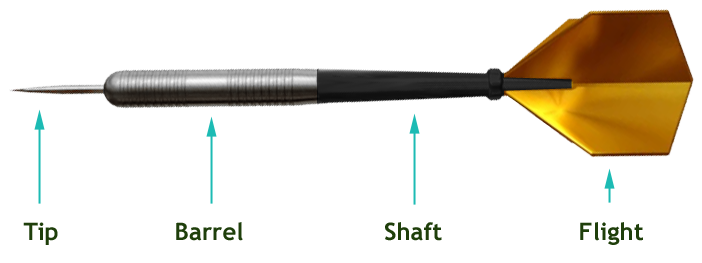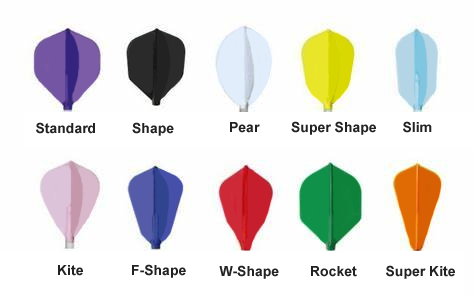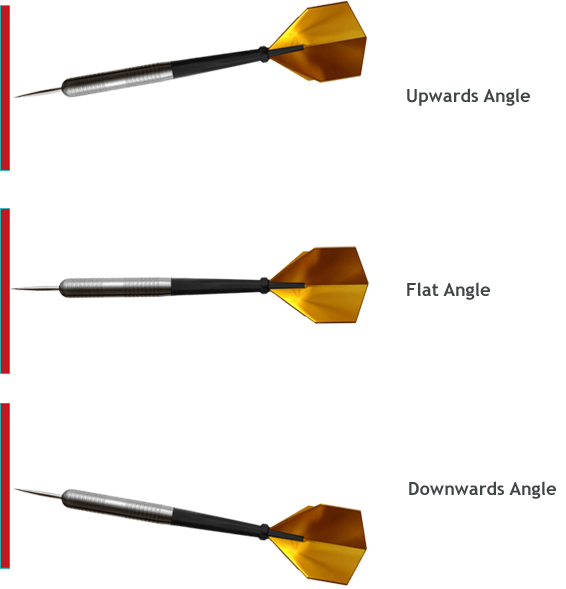Dart Anatomy 101: Understanding How Dart Design Affects Your Throw
Darts is a game of precision and skill, where every aspect of the dart, from tip to tail, can influence your throw. In this article, we'll delve into the anatomy of a dart and explore how different design elements impact your game.

Point Length:
The length of the dart point plays a crucial role in how the dart penetrates the dartboard and more importantly where you balance point is on your darts. Each dart possesses a critical "balance point" marking the spot where weight is evenly distributed on both sides. The length of the dart's point directly impacts this balance point and pushes that spot further back. Finding the right balance between length and weight is essential for optimal performance.
Barrel Design:
The composition of the dart barrel directly affects your grip, control, and overall performance on the dartboard. Barrels are made with various metals and composites like steel, brass, nickel silver, tungsten, carbon fiber, copper, aluminum and titanium.
Weight, from heaviest to lightest:
- Tungsten
- Steel
- Brass
- Nickel Silver
- Copper
- Carbon Fiber
- Aluminum
- Titanium
The barrel's grip texture and surface come in various shapes and weights, each affecting the dart's flight and trajectory. A heavy 30 gram dart requires a stronger throw while a lighter 20 gram dart requires a more delicate and precise release. The knurling on a barrel refers to the textured patterns and/or grooves on the surface of the dart barrel. While these patterns provide additional grip for the player and the deeper the groove can allow for the contours of your fingers, thus making each person's perfect dart slightly different. Pro darters have a consistent grip and release helped by the barrel's smooth OR textured surface depending on their preference. From beginner level all the way up to pro level, some darters just can't settle on a specific dart, thus spawning an ever evolving dart anatomy where one will constantly changes their flights or barrel or shaft, never settling on one complete package.
Weight and Shape:
The weight distribution and shape of the barrel significantly impact the dart's stability and balance in flight. Front-heavy darts tend to fly in a more predictable arc, while rear-weighted darts offer greater control but require a smoother release. Additionally, tapered barrels provide a comfortable grip and can help reduce dart slippage during the throw.
Shaft Length:
The length of the dart shaft affects the dart's stability and its overall trajectory. Shorter shafts offer less resistance and allow for tighter groupings, making them suitable for players who prefer a faster throw. On the other hand, longer shafts provide more stability and may help correct the dart's flight path, particularly for players with a slower throw.

Flight Shape:
The shape and size of the flight determine how the dart travels through the air and how it lands on the dartboard. Standard flights offer a balance between speed and stability, making them popular among players of all skill levels. However, larger flights provide more lift and can help stabilize the dart's trajectory, while smaller flights offer greater speed and maneuverability.

Flight Angle:
Several factors influence the angle at which a dart enters the board. Grip position, throwing style, flight shape, stem length, barrel weight, and weight distribution all play a role. Darts with larger flights and lighter weights, paired with short stems, tend to sit higher on the board. Conversely, those with smaller flights, heavier weights, and longer stems lie flatter. Achieving a flatter entry angle requires finding the right balance among these factors. Adjusting from an upward or downward angle to a flatter one often involves experimentation with different flights, barrels, and stems.
Entry Angle Factors
- Light darts with large flights and short stems tend to produce an upward angle.
- Heavy darts with small flights, long stems, and front-weighted barrels tend to result in a downward angle.
- Grip position also plays a role, with gripping closer to the point often leading to a downward angle, while gripping closer to the stem can result in an upward angle.
Some darters say that a 10% upwards angle is the perfect angle, offering a balance between minimizing bounce-outs and maximizing scoring potential.

Understanding the anatomy of a dart is essential for any serious darts player looking to improve their game. By experimenting with different dart designs and configurations, you can find the perfect combination that suits your throwing style and maximizes your performance on the oche.
